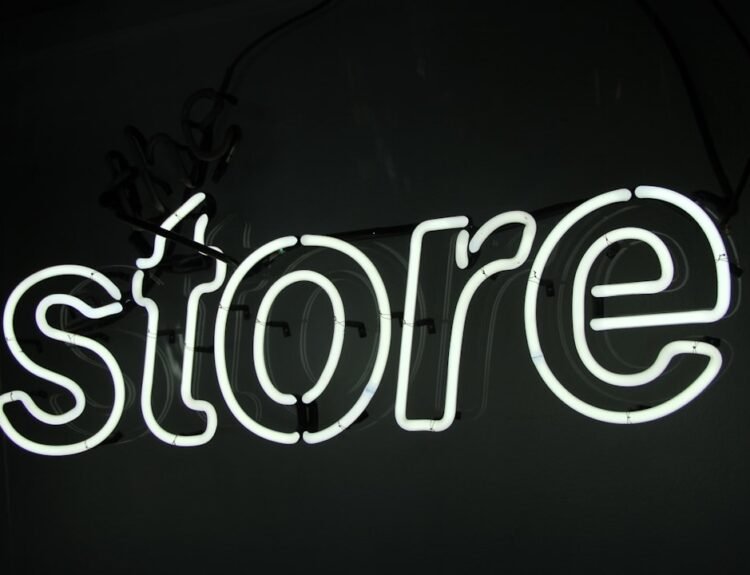In an increasingly digital world, managing personal finances has become more accessible and efficient, thanks in large part to the advent of personal expense tracking apps. These applications serve as powerful tools that allow users to monitor their spending habits, budget effectively, and ultimately gain a clearer understanding of their financial health. With the proliferation of smartphones and tablets, these apps have transformed the way individuals approach their finances, making it easier than ever to track expenses on the go.
The concept of expense tracking is not new; however, the integration of technology has revolutionized how people engage with their financial data. Gone are the days of manually recording every transaction in a ledger or relying on spreadsheets that can be cumbersome and time-consuming. Today’s expense tracking apps offer a user-friendly interface that simplifies the process of logging expenses, categorizing transactions, and generating insightful reports.
As a result, users can make informed decisions about their spending and savings, paving the way for better financial management.
Benefits of Using Expense Tracking Apps
One of the primary benefits of using expense tracking apps is the enhanced visibility they provide into one’s financial habits. By categorizing expenses and presenting them in a clear format, users can quickly identify where their money is going. This level of transparency is crucial for anyone looking to cut unnecessary spending or allocate funds more effectively.
For instance, an individual may discover that they are spending a significant portion of their income on dining out, prompting them to reconsider their eating habits and explore more budget-friendly options. Another significant advantage is the ability to set and monitor budgets in real-time. Many expense tracking apps allow users to establish spending limits for various categories, such as groceries, entertainment, or transportation.
This feature not only encourages responsible spending but also fosters a sense of accountability. Users can receive alerts when they approach their budget limits, helping them to stay on track and avoid overspending. This proactive approach to budgeting can lead to improved financial discipline and ultimately contribute to long-term financial goals, such as saving for a vacation or paying off debt.
Features to Look for in Expense Tracking Apps

When selecting an expense tracking app, it is essential to consider several key features that can enhance the user experience and effectiveness of the tool. One critical feature is bank synchronization, which allows users to link their bank accounts and credit cards directly to the app. This functionality automates the tracking process by importing transactions in real-time, reducing the need for manual entry and minimizing errors.
Users can benefit from a comprehensive overview of their financial activity without the hassle of constant data input. Another important feature is customizable categorization. Different users have different spending patterns, so an app that allows for personalized categories can significantly improve its utility.
For example, someone who frequently travels for work may want to create specific categories for travel expenses, while another user might prioritize categories related to family activities or home improvement projects. Additionally, robust reporting tools are essential; users should be able to generate detailed reports that provide insights into their spending trends over time. This data can be invaluable for making informed financial decisions and adjusting budgets as necessary.
Top Free Expense Tracking Apps
| App Name | Platform | Rating | Downloads |
|---|---|---|---|
| Expense Manager | Android | 4.5 | 1,000,000+ |
| Wallet – Finance Tracker and Budget Planner | iOS, Android | 4.7 | 500,000+ |
| Money Manager: Expense Tracker, Free Budgeting App | iOS, Android | 4.6 | 1,500,000+ |
| Goodbudget: Budget & Finance | iOS, Android | 4.6 | 1,000,000+ |
Several free expense tracking apps have gained popularity due to their user-friendly interfaces and robust features. One notable example is Mint, which has been a staple in personal finance management for years. Mint allows users to connect their bank accounts and credit cards, automatically categorizing transactions and providing insights into spending habits.
The app also offers budgeting tools and alerts for bill payments, making it a comprehensive solution for managing finances without any cost. Another excellent free option is PocketGuard, which focuses on helping users understand how much disposable income they have after accounting for bills, goals, and necessities. The app’s simple interface makes it easy to track expenses and set savings goals.
Users can also view recurring payments and subscriptions, which can help identify areas where they might be overspending or where they could cut back. Both Mint and PocketGuard exemplify how free apps can provide substantial value without requiring a financial commitment.
Top Paid Expense Tracking Apps
While many free expense tracking apps offer valuable features, some users may find that paid options provide additional functionality that justifies the cost. One such app is YNAB (You Need A Budget), which operates on a subscription model but offers a unique approach to budgeting that emphasizes proactive financial management. YNAB encourages users to allocate every dollar they earn to specific categories, promoting a zero-based budgeting philosophy.
This method helps users prioritize their spending and savings goals effectively. Another noteworthy paid app is EveryDollar, which was developed by financial expert Dave Ramsey. EveryDollar offers a straightforward budgeting experience with an emphasis on zero-based budgeting as well.
Users can create customized budgets and track expenses easily through its intuitive interface. The app also provides a premium version that includes bank synchronization for automatic transaction imports, making it easier for users to stay on top of their finances without manual entry.
How to Choose the Right Expense Tracking App for You

Choosing the right expense tracking app involves assessing personal needs and preferences. First and foremost, consider your financial goals; are you looking to simply track expenses, or do you want a comprehensive budgeting tool? If your primary focus is on tracking spending without much complexity, a free app like Mint may suffice.
However, if you are serious about budgeting and want a more structured approach, investing in an app like YNAB could be beneficial. Additionally, evaluate the user interface and ease of use. An app that is difficult to navigate may lead to frustration and decreased usage over time.
Look for apps that offer a trial period or free version so you can test them out before committing financially. Finally, consider whether you prefer manual entry or automated syncing with your bank accounts; this choice can significantly impact your experience with the app.
Tips for Using Expense Tracking Apps Effectively
To maximize the benefits of expense tracking apps, users should adopt certain best practices that enhance their effectiveness. One key tip is to make it a habit to log expenses regularly—ideally daily or weekly—to ensure that all transactions are accounted for accurately. Setting aside time each week to review spending can help reinforce good financial habits and keep users engaged with their financial goals.
Another effective strategy is to utilize the reporting features available within the app. Regularly reviewing reports can provide valuable insights into spending patterns and highlight areas where adjustments may be necessary. For instance, if a user notices that they consistently overspend in a particular category, they can take proactive steps to address this issue by adjusting their budget or finding ways to reduce expenses in that area.
Conclusion and Final Thoughts on Expense Tracking Apps
Personal expense tracking apps have become indispensable tools for individuals seeking to take control of their finances in today’s fast-paced world. With numerous options available—ranging from free apps like Mint and PocketGuard to paid solutions like YNAB and EveryDollar—users have access to a wealth of resources designed to simplify budgeting and expense management. By understanding the benefits these apps offer and selecting one that aligns with personal financial goals, individuals can cultivate better spending habits and work towards achieving their financial aspirations.
Ultimately, the effectiveness of an expense tracking app hinges on how well it integrates into daily life. By committing to regular usage and leveraging the insights provided by these tools, users can foster a deeper understanding of their financial landscape and make informed decisions that lead to greater financial stability and success over time.
FAQs
What are personal expense tracking apps?
Personal expense tracking apps are mobile or web-based applications that help individuals monitor and manage their spending. These apps typically allow users to input their expenses, categorize them, set budgets, and generate reports to gain insights into their financial habits.
How do personal expense tracking apps work?
Personal expense tracking apps work by allowing users to input their expenses manually or automatically through bank account integration. The apps then categorize the expenses and provide visual representations of the user’s spending habits, such as charts and graphs.
What features do personal expense tracking apps typically offer?
Personal expense tracking apps often offer features such as expense categorization, budget setting, bill reminders, receipt scanning, bank account integration, and customizable reports. Some apps may also offer investment tracking and goal setting features.
What are the benefits of using personal expense tracking apps?
Using personal expense tracking apps can help individuals gain a better understanding of their spending habits, identify areas where they can save money, and stay on top of their financial goals. These apps can also save time and effort compared to manual expense tracking methods.
Are personal expense tracking apps secure?
Most personal expense tracking apps use encryption and other security measures to protect users’ financial data. It’s important for users to choose reputable apps with strong security measures and to use secure passwords to further protect their information.
Are personal expense tracking apps free to use?
Many personal expense tracking apps offer free versions with basic features, while others may require a subscription or one-time purchase for access to more advanced features. Users should research and compare different apps to find one that fits their budget and needs.



